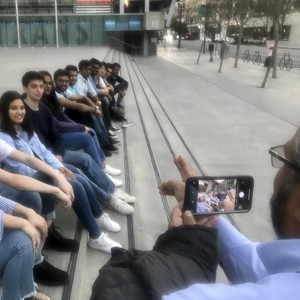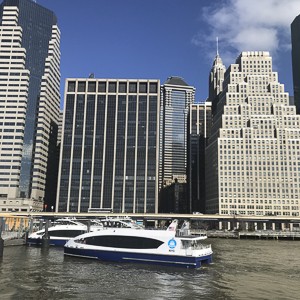Welcome to the Center for Buildings, Infrastructure and Public Space. The CBIPS seeks to identify how best to design, construct, and manage buildings, infrastructure, and civic spaces, emphasizing social impact, sustainability, and resilience, in addition to cost, schedule, quality, and safety.

FELLOWS
The Fellowship Program of the Center for Buildings, Infrastructure and Public Space brings together motivated graduate students, committed faculty members, recent School of Engineering alumni, and a distinguished Board of Advisors to search for ways to create and connect legacy buildings, needed infrastructure, and planned development. In so doing, CBIPS Fellows pursue ways to catalyze economic success and urban innovation to help define the future of cities. Each academic year, approximately 20 students are welcomed into the CBIPS Fellows Program to conduct individual or small-group research relating to the key issues of the day, including infrastructure decarbonization, bridge resiliency, and social housing in 2023-24.

INITIATIVES
Interdisciplinary initiatives of the CBIPS provide analytic platforms for the promotion of scholarship and innovation in civil engineering, architecture, urban design, construction technology, real estate, finance, city planning, historic preservation, and their allied sciences and arts. CBIPS seeks to foster dialogue and collaboration among Fellows, engineers, and other design and construction professionals together with city planners and policy makers both within and beyond Columbia University. The action research methodology of CBIPS is designed to address the daunting problems discernible in large cities outside of a siloed disciplinary context to guide future actions and planning.

PROGRAMS
CBIPS programs start with small-group research projects on topics selected by the Fellows. Done in partnership with municipal agencies or leading private sector engineering and construction management firms, the analysis is directed at real-life, real-time challenges facing New York City and other urban centers worldwide. Research is presented at weekly seminars in the CBIPS Studio Lab so that faculty and others in the program, including other Fellows, can comment and question assumptions. Research is augmented by site visits to construction sites and recently completed buildings and infrastructure projects in NYC, and by national and international field studies.

EMPHASIS
Multidisciplinary practice defines the integration of infrastructure projects that create assets for governments, businesses, and organizations. The Center for Buildings, Infrastructure and Public Space creates partnership opportunities through curriculum, research, and application strategies that can help reinvent how we deliver sustainable, resilient and secure projects for the future. Particular areas of emphasis during the 2020-21 academic year centered on the future of New York City and other global centers, focusing on public space, green buildings, and the future of residential and commercial real estate. The impact of the COVID-19 pandemic and the acceleration of changes in technology, communications and the AEC Industry were featured.

HISTORY
The Center for Buildings, Infrastructure and Public Space at Columbia University’s Fu Foundation School of Engineering and Applied Science was launched on October 2, 2018. The CBIPS seeks to identify how best to design, construct, and manage buildings, infrastructure, and civic space, emphasizing social impact, sustainability, and resiliency, along with cost, schedule, quality, and safety. Using interdisciplinary research methodologies, we search for ways to create and connect legacy buildings, needed infrastructure, and planned development to improve the quality of life. Our Advisory Board helps catalyze research on urban innovations that help define the future of cities.

NEW YORK CITY
The CBIPS Studio Lab is located in suite 706A of the Seeley W. Mudd Building, in the northeast corner of Columbia University’s McKim, Mead & White campus. The Studio Lab, newly outfitted for the CBIPS, provides a convenient meeting and exhibition space for research activities and research-driven lectures and discussions. The statue of Le Marteleur (The Hammerman) located outside of the Fu Foundation School of Engineering and Applied Science is a reminder of the effort and labor involved in the search for innovative futures. In some ways the statue symbolizes NYC, the center of the U.S. design and construction industry. NYC demonstrates the connection of infrastructure and quality of life.
